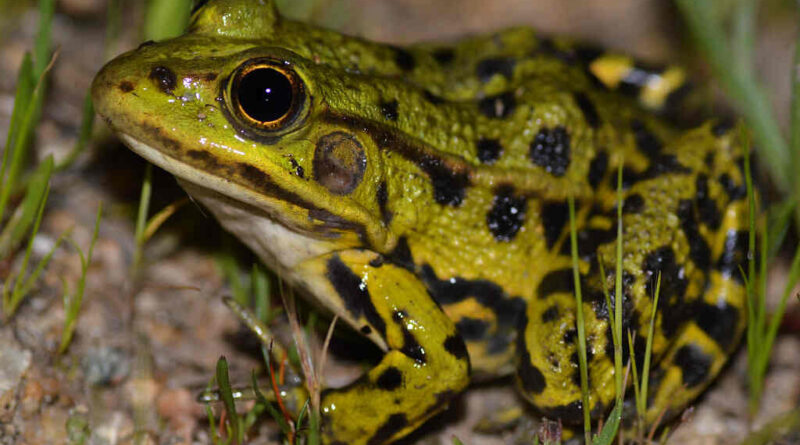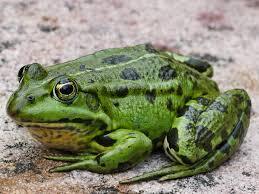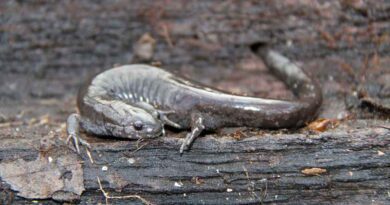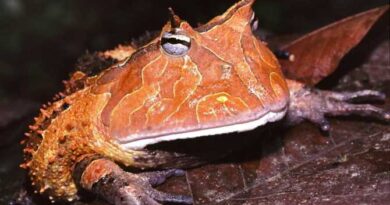Northern Pool Frog
The Pool Frog (Pelophylax lessonae) is a fascinating European frog in the Ranidae family. Named by Italian herpetologist Lorenzo Camerano in 1882 to honor his master, Michele Lessona, this species was once presumed extinct in the wild in 1995. However, recent research has clarified its native status and confirmed that the English Pool Frogs belong to a distinct and rare northern group, also found in Sweden and Norway.
Pool Frogs were reintroduced at a single site in Norfolk using northern clade frogs collected from Sweden between 2005 and 2008. This reintroduction effort aimed to restore the complex species of Green Frogs, which includes Marsh Frogs and Edible Frogs. Genetic studies and regional accents in calls have revealed the true ancestry of these frogs, showing their connection to a rare northern group rather than exotic species from further Europe.
Where to find them ?
Pool frogs are native to central Europe, ranging from the west coast of northern France to parts of western Russia. They are also found in small populations across the United Kingdom, Spain, Sweden, and Norway. While once thought to be a non-native species in the UK, recent studies show that English pool frogs are actually closely related to Scandinavian populations rather than those from further south. The damp areas they prefer are often characterized by dense vegetation and include calm, slow-flowing rivers, ponds, bogs, and marshes.
Despite their initial presumed extinction in the UK in 1995, pool frogs have made a comeback. They were reintroduced to two sites in Norfolk, with genetic analyses confirming their close ties to a northern clade found in Scandinavia and Estonia. These frogs have adapted well to both natural and urban areas, including fisheries and new ponds created for their habitat. The growth and dispersal of their populations have been supported by the creation of these new water bodies.
The Biodiversity Action Plan of the UK recognizes pool frogs as a protected species. The main threats to their populations include decreased pond habitat due to human encroachment and air pollution, which leads to over-nitrification of the waters they rely on. With ongoing protection and habitat management, these frogs are making a steady recovery, demonstrating the resilience of species when given proper care and attention.
Identification
Pool frogs are relatively small, with adult females reaching up to 9 cm (3.5 in) in length, while males are significantly smaller, typically about 5 cm (2.0 in). Their colour can vary, but they are often brown or green with dark blotches on their backs. A distinctive feature includes a cream or yellow stripe running down the middle of their back, along with a pair of ridges from the eyes down the back. During the breeding season, males have vocal sacs that are white or cream.
In terms of size, pool frogs are comparable to common frogs, with an average length of 6 cm. The breeding males are noted for their loud call, which can be likened to ducks quacking or rapid laughter. This call is produced by inflatable pouches (vocal sacs) at the sides of their mouths, a feature not found in the common frog (Rana temporaria). The oval horizontal pupils and the distinctive call are key traits for identifying these frogs.
Lifecycle
Pool frogs have a distinctive life cycle adapted to their environment. They breed later in the year compared to the common frog, with their breeding season aligning with the onset of warm nights in May and June. During this time, males use their vocal sacs to produce a loud call, which is a key part of their breeding ritual. They lay their spawn in clumps in calm ponds and slow-flowing rivers, with the egg rafts being smaller and the individual eggs appearing brown on top and yellowish underneath.
Throughout the year, pool frogs live in damp, densely vegetated areas like marshes and ponds. They are primarily aquatic, spending much of their time near the water and even basking in the sunshine on the hottest days. Adult frogs hibernate on land from October to April, emerging in late spring to breed. In autumn, froglets prepare for winter by feeding on invertebrates such as spiders, insects, moths, and flies. Despite facing threats from predators like grass snakes, herons, and owls, and drainage of fens, the pool frog’s life cycle is finely tuned to its habitat.
Protection
Pool frogs receive full legal protection under UK law, specifically the Wildlife and Countryside Act 1981 and the Conservation of Habitats and Species Regulations 2017. It is an offence to kill, injure, capture, disturb, damage, or destroy their breeding and resting habitats. Additionally, it is illegal to sell or trade these frogs. This protection extends to all life-stages, ensuring their safety throughout their entire lifecycle.



